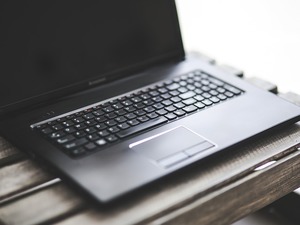 Once upon a time, it was rumored that the de facto standard of excellence for a business work laptop was the IBM ThinkPad. There are those who may disagree with this, but even when IBM sold off its laptop business to Chinese manufacturer Lenovo, the ThinkPad was still highly sought after on the basis of its reputation.
Once upon a time, it was rumored that the de facto standard of excellence for a business work laptop was the IBM ThinkPad. There are those who may disagree with this, but even when IBM sold off its laptop business to Chinese manufacturer Lenovo, the ThinkPad was still highly sought after on the basis of its reputation.
But times have changed, and with the increasing use of mobile technology, the role of the laptop computer needs to be re-examined. That re-examination includes the essential features needed to make it a separate and distinct part of a technology plan for the business.
Connections
There are many different types of connections available for a laptop, but some are considered to be essential. Beware of companies who advertise a computer that is said to have all the basic features at a low price. When it comes to connections, you will likely need three or more USB ports, at least one which should be a USB 3.0. When you are on the road and find yourself short of USB connections it can be a huge problem, USB hubs or not.
Because laptops are often used for presentations, a laptop should have a direct hardware connection to a projector. Though this usually costs extra, it is well worth the cost given the problems software based connections can bring to a situation. Remember that a laptop is a tool to increase productivity or add new clients. A poor showing at the cost of a few dollars can hardly be considered the best use of your technology budget.
Processor
There are a variety of laptop processors to choose from, among the most popular being the Intel i-series and AMD’s cheaper but very functional line of processors. This is one of those decisions that should be made with an in-house technology person or a consultant. The reason is that there are situations in which an Intel processor may be a necessity in order to cleanly run certain types of software without glitches. There is a reason companies charge a premium for their products, and in some cases the Intel processor is a must.
Processor speed is a determining factor because math-intensive or graphic-intensive applications require a lot of processing power to run smoothly. What is connected to the processor speed is the display quality, as higher resolutions generally place higher demand on the processor. Be sure to do some homework on the differences between a CPU, the processor and the GPU, which handles graphic output. Some processors such as Intel’s i7 have both contained in the same unit.
Power
Although in many cases your laptop will be using an electrical outlet for power, there will be times when the battery life is essential for the laptop being a useful business tool. The longer the battery life, the less likelihood that forgetting to charge the laptop will have a significant impact. There is also the option of buying a second battery as a backup. Battery life and processor speed are directly connected, particularly if you are using applications that make high use of graphics or processor intensive tasks. Running multiple applications will also strain your battery resources.
Be sure to distinguish between need-to-haves and want-to-haves. A larger screen size may be nicer but may not be necessary if the majority of your use is connecting the laptop to a projector. Opting for a higher quality optical drive is possible, but how much use will you get from it? When evaluating your essential needs, be sure to align them with the overall function of the person who will be using the laptop. Keep in mind the laptop is a tool for people, not the other way around.


